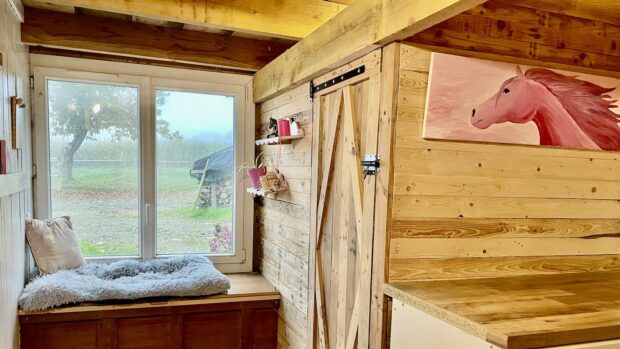The equestrian world cannot escape the impact of the cost-of-living “squeeze” as rising costs and inflation hit.
Independent think tank Resolution Foundation has predicted 2022 will be “the year of the squeeze” with stalling wages and high inflation, as well as rising taxes and the expected hike in energy bills among the key reasons.
There are challenges for businesses, too. For example, the forthcoming minimum wage increases (news, 30 December), and other costs are rising. These are issues facing households and businesses as a whole, meaning the equestrian world is not immune.
British Equestrian Trade Association executive director Claire Williams told H&H that a “perfect storm” of contributing factors is behind rising costs.
“It is a very complicated supply situation,” she said, adding that businesses are not putting up prices “because they want to”, but because their costs are rising.
“For a lot that have tried to hold off, it is reaching a point where their prices have to go up.”
Ms Williams explained rising inflation, minimum wage, energy prices, fertiliser, packaging, shipping, Brexit, and the pandemic are all part of the complex economic web.
She gave the example of shipping container costs from China as being around $2,000 (£1,500) pre-pandemic, to hearing of a top price last year of $23,000 (£16,800).
“Whereas pre-pandemic, if you had say $70,000 [£51,300] worth of goods in a container, the fee was 3% of the total value. [On those figures] that would now be over a third of the value,” she said.
An NFU spokesman told H&H that farmers continue to face “extreme inflationary pressure”, for example owing to an ongoing shortage of labour in the food supply chain or input costs rising at record levels.
“Key products like nitrogen fertiliser have risen by 200% over the past year, and animal feed has risen by 60% over the past two years,” she said, adding that farmers being paid fair prices must be treated as a priority by Defra.
“The Government made supply chain fairness a key feature of the Agriculture Act [2020] and farmers are keen to work with ministers to fix the structural issues to ensure a level playing field through the chain.”
Livery yard owner Debbie Barker-Runiewicz told H&H equestrian businesses like hers are facing cost increases from many angles.
She said that she loves her yard, and has “lovely liveries” who are understanding about the realities. But looking at the equestrian world as a whole, she is concerned about what the economic climate and impact the demand for cheap livery could have on both the industry and horse welfare.
“People have high expectations and wants and needs for their horses, but not necessarily the understanding of the cost and what they might need to pay for those things,” she said, adding that costs have to be passed on when running a business.
Mrs Barker-Runiewicz highlighted recruiting and staffing costs, including the forthcoming 59p/hour increase in the living wage from April 2022, as a major pressure on businesses.
She added that rising “hidden costs”, such as building materials, energy prices and waste disposal, are another factor for yards that horse owners may not be aware of.
“Wood is really expensive at the moment, and the price of building materials has gone up massively,” said Mrs Barker-Runiewicz, adding that this in turn has a knock-on effect on maintenance costs and yard improvements, such as repairing and replacing stables.
“When yards are already trying to work as smart as they can, the increase in cost will need to be passed on.
“Most yards work as hard and fast as they can to be as cost-effective as possible, while maintaining standards. It does make me worry about where the industry is going.”
Welfare
Redwings chief executive Lynn Cutress told H&H that welfare charities were “gravely concerned” through the pandemic that they would see a knock-on impact on horse welfare.
“Thankfully, our concerns have not been realised to date,” she said. “However, we are worried that the projected rise in living costs over the coming months combined with the continuing issues around Covid-19 could be the tipping point in terms of people’s abilities to keep their horses.
“Several of the equine welfare charities are keeping in regular contact to share knowledge and information, including any changes to the numbers of horses being reported to us or the reasons owners are struggling.”
She added at a time like this, it’s important to remember that horse charities are not in a position to take on horses from private owners as we must keep our limited spaces for rescue cases.
“At Redwings, we will be facing our own challenges as an employer of nearly 400 staff members, the majority of whom care for our horses every day,” said Ms Cutress.
“As an example, this year we have budgeted for a 20% rise in costs of feed and forage and, overall, our budgeted charitable spend is up 23% for materials and consumables alone. This means we are facing a significant deficit and will almost certainly be dipping into our savings this year, precisely at a time when charity sector reports are suggesting that increasing costs may impact people’s ability to donate.
“We would encourage anyone thinking of taking on a horse at the moment to really do their sums carefully. Owning a horse is a huge commitment both in time and expense even without these current challenges.”
You might also be interested in:

Subscribe to Horse & Hound magazine today – and enjoy unlimited website access all year round

Employers urged to plan ahead for 2022 minimum wage rise

A change of view could help equestrian business viability *H&H Plus*

10 top tips for finding and retaining employees
We look at advice and tips from some of the speakers on how to be a good employer and how

Protecting yourself, your business and your staff: why the industry’s workforce must be a priority *H&H Plus*
Horse & Hound magazine, out every Thursday, is packed with all the latest news and reports, as well as interviews, specials, nostalgia, vet and training advice. Find how you can enjoy the magazine delivered to your door every week, plus options to upgrade your subscription to access our online service that brings you breaking news and reports as well as other benefits.





